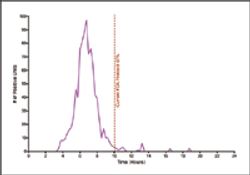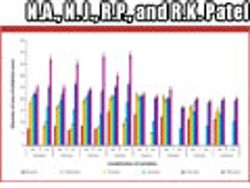Statistical Solutions: %RSD: Friend or Foe?
When to use percent relative standard deviation-and how to do so correctly.
Some tools are so useful and intuitive that they achieve widespread acceptance without recommendation. Percent relative standard deviation (%RSD) is one such tool. By formula, it is the standard deviation of a data set divided by the average of the data set multiplied by 100. Conceptually, it is the variability of a data set expressed as a percentage relative to its location. Statisticians know it as the coefficient of variation (CV) (1).
Analytical laboratories measure and understand variability to estimate product quality. For most analytical laboratory staff and management, the %RSD is used extensively as a universal measure of that variability. It is a general yardstick for chemists for analysis and interpretation.
Lynn D. Torbeck
The understandable appeal lies in its simplicity and in its expression as a percentage. People interpret percentages more easily than the standard deviation in units of, for example, mg/mL.
An advantage of the %RSD is that comparisons can be made across dissimilar results. In fact, the first use was to compare men and women. In 1895, the geneticist and statistician Karl Pearson calculated the averages and standard deviations of male and female internal organs. The men were larger and had larger variability. To compare them on the same basis, he adjusted the standard deviation of each by dividing by the average of each. Multiplying by 100 then yielded a percentage.
%RSD is most beneficial for comparisons where the units of the measurements are different, for example mg/mL and absorbance. It provides a common base for comparison.
While %RSD is clearly useful, care is needed in the application and interpretation because of its statistical properties. For example, it should only be used where zero for the measurement has real physical meaning such as length, weight, or area under the curve. Don't use it where zero is arbitrary, such as pH.
Table I: Example of a misleading standard deviation (SD).
The %RSD is also useful when the standard deviation is proportional to the average. If the standard deviation doesn't change much over the range of the group averages, it can be misleading as shown in Table I. Note that the %RSD is changing because the average is changing, not the standard deviation. In Table II, the standard deviation is proportional to the average and the %RSD is unchanged.
Table II: Example of a standard deviation (SD) that is proportional to the average.
Good documentation requires reporting the sample size, average, and standard deviation with the %RSD. The %RSD is misleading when used with data that are expressed as a percentage such as percent recovery. The standard deviation of the data is already in percent. To then find the %RSD is to make the results dependent on the random variation of the average. This defeats the original purpose of estimating the variation of the data values.
The %RSD is not useful for data with a very small average. As the average gets smaller, the %RDS gets larger, approaching infinity as the average approaches zero, which is not a desirable result. It is not useful for limit of quantitation and limit of detection for example.
How to work with the percent relative standard deviation tool (%RSD).
Estimates of the standard deviation and thus the %RSD are very poor for small sample sizes. There is considerable variation in the estimates of variation when the sample sizes are small. For example, for a sample of 10 data points with 95% confidence, the maximum percent error in estimating the standard deviation can be as large as 50% (2). This variation also illustrates that a calculated standard deviation or %RSD is not a fixed value. Another sample would yield a different value for both.
Following the dictum of the right tools for the job, use the %RSD but do it correctly.
Lynn D. Torbeck is a statistician at Torbeck and Assoc.,2000 Dempster Plaza, Evanston, IL 60202, tel. 847.424.1314, Lynn@Torbeck.org, www.torbeck.org.
References
1. K. Pearson, Phil. Tans. Royal Soc. London (A), 187, 253–318 (1896).2. L. S. Nelson, Jrnl. of Quality Technol., 8 (3), 179–180 (1976).



